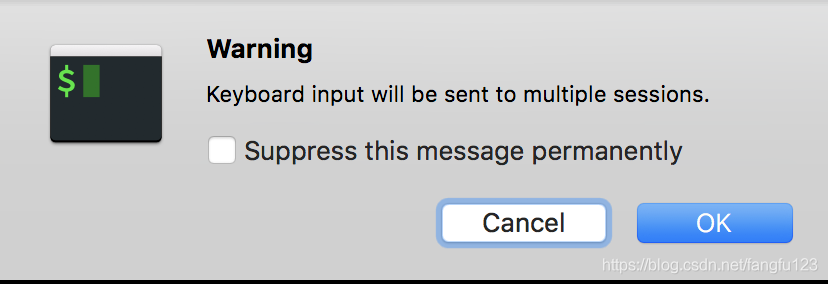CentOS 7.x开始,CentOS开始使用systemd服务来代替daemon,原来管理系统启动和管理系统服务的相关命令全部由systemctl命令来代替。
1、原来的 service 命令与 systemctl 命令对比
| daemon命令 | systemctl命令 | 说明 |
|---|---|---|
| service [服务] start | systemctl start [unit type] | 启动服务 |
| service [服务] stop | systemctl stop [unit type] | 停止服务 |
| service [服务] restart | systemctl restart [unit type] | 重启服务 |
此外还是二个systemctl参数没有与service命令参数对应
-
status:参数来查看服务运行情况
-
reload:重新加载服务,加载更新后的配置文件(并不是所有服务都支持这个参数,比如network.service)
应用举例:
#启动网络服务 systemctl start network.service#停止网络服务 systemctl stop network.service#重启网络服务 systemctl restart network.service#查看网络服务状态 systemctl status network.serivce
2、原来的chkconfig 命令与 systemctl 命令对比
2.1、设置开机启动/不启动
| daemon命令 | systemctl命令 | 说明 |
|---|---|---|
| chkconfig [服务] on | systemctl enable [unit type] | 设置服务开机启动 |
| chkconfig [服务] off | systemctl disable [unit type] | 设备服务禁止开机启动 |
应用举例:
#停止cup电源管理服务 systemctl stop cups.service#禁止cups服务开机启动 systemctl disable cups.service#查看cups服务状态 systemctl status cups.service#重新设置cups服务开机启动 systemctl enable cups.service
2.2、查看系统上上所有的服务
命令格式:
systemctl [command] [–type=TYPE] [–all]
参数详解:
command – list-units:依据unit列出所有启动的unit。加上 –all 才会列出没启动的unit; – list-unit-files:依据/usr/lib/systemd/system/ 内的启动文件,列出启动文件列表
–type=TYPE – 为unit type, 主要有service, socket, target
应用举例:
| systemctl命令 | 说明 |
|---|---|
| systemctl | 列出所有的系统服务 |
| systemctl list-units | 列出所有启动unit |
| systemctl list-unit-files | 列出所有启动文件 |
| systemctl list-units –type=service –all | 列出所有service类型的unit |
| systemctl list-units –type=service –all grep cpu | 列出 cpu电源管理机制的服务 |
| systemctl list-units –type=target –all | 列出所有target |
3、systemctl特殊的用法
| systemctl命令 | 说明 |
|---|---|
| systemctl is-active [unit type] | 查看服务是否运行 |
| systemctl is-enable [unit type] | 查看服务是否设置为开机启动 |
| systemctl mask [unit type] | 注销指定服务 |
| systemctl unmask [unit type] | 取消注销指定服务 |
应用举例:
#查看网络服务是否启动 systemctl is-active network.service#检查网络服务是否设置为开机启动 systemctl is-enable network.service#停止cups服务 systemctl stop cups.service#注销cups服务 systemctl mask cups.service#查看cups服务状态 systemctl status cups.service#取消注销cups服务 systemctl unmask cups.service
4、init 命令与systemctl命令对比
| init命令 | systemctl命令 | 说明 |
|---|---|---|
| init 0 | systemctl poweroff | 系统关机 |
| init 6 | systemctl reboot | 重新启动 |
与开关机相关的其他命令:
| systemctl命令 | 说明 |
|---|---|
| systemctl suspend | 进入睡眠模式 |
| systemctl hibernate | 进入休眠模式 |
| systemctl rescue | 强制进入救援模式 |
| systemctl emergency | 强制进入紧急救援模式 |
5、设置系统运行级别
5.1、运行级别对应表
| init级别 | systemctl target |
|---|---|
| 0 | shutdown.target |
| 1 | emergency.target |
| 2 | rescure.target |
| 3 | multi-user.target |
| 4 | 无 |
| 5 | graphical.target |
| 6 | 无 |
此外还是一个getty.target用来设置tty的数量。
5.2、设置运行级别
命令格式:
systemctl [command] [unit.target]
参数详解:
command:
-
get-default :取得当前的target
-
set-default :设置指定的target为默认的运行级别
-
isolate :切换到指定的运行级别
-
unit.target :为5.1表中列出的运行级别
| systemctl命令 | 说明 |
|---|---|
| systemctl get-default | 获得当前的运行级别 |
| systemctl set-default multi-user.target | 设置默认的运行级别为mulit-user |
| systemctl isolate multi-user.target | 在不重启的情况下,切换到运行级别mulit-user下 |
| systemctl isolate graphical.target | 在不重启的情况下,切换到图形界面下 |
6、使用systemctl分析各服务之前的依赖关系
命令格式:
systemctl list-dependencies [unit] [–reverse]
–reverse是用来检查寻哪个unit使用了这个unit
应用举例:
#获得当前运行级别的target[root@www ~]# systemctl get-default multi-user.target#查看当前运行级别target(mult-user)启动了哪些服务[root@www ~]# systemctl list-dependencies default.target ├─abrt-ccpp.service ├─abrt-oops.service ├─vsftpd.service ├─basic.target │ ├─alsa-restore.service │ ├─alsa-state.service .....(中间省略)..... │ ├─sockets.target │ │ ├─avahi-daemon.socket │ │ ├─dbus.socket .....(中间省略)..... │ ├─sysinit.target │ │ ├─dev-hugepages.mount │ │ ├─dev-mqueue.mount .....(中间省略)..... │ └─timers.target │ └─systemd-tmpfiles-clean.timer ├─getty.target │ └─getty@tty1.service └─remote-fs.target#查看哪些target引用了当前运行级别的target[root@www ~]# systemctl list-dependencies --reverse default.target └─graphical.target
7、关闭网络服务
在使用systemctl关闭网络服务时有一些特殊 需要同时关闭unit.servce和unit.socket
使用systemctl查看开启的sshd服务
[root@www system]# systemctl list-units --all | grep sshd sshd-keygen.service loaded inactive dead OpenSSH Server Key Generation sshd.service loaded active running OpenSSH server daemon sshd.socket loaded inactive dead OpenSSH Server Socket
可以看到系统同时开启了 sshd.service 和 sshd.socket , 如果只闭关了 sshd.service 那么 sshd.socket还在监听网络,在网络上有要求连接 sshd 时就会启动 sshd.service 。因此如果想完全关闭sshd服务的话,需要同时停用 sshd.service 和 sshd.socket 。
systemctl stop sshd.service systemctl stop sshd.socket systemctl disable sshd.service sshd.socket
由于centos 7.x默认没有安装net-tools,因此无法使用netstat 来查看主机开发的商品。需要通过yum安装来获得该工具包:
yum -y install net-tools
查看是否关闭22端口
netstat -lnp |grep sshd
8、关闭防火墙firewall
Centos 7.x 中取消了iptables, 用firewall取而代之。要关闭防火墙并禁止开机启动服务使用下面的命令:
systemctl stop firewalld.service systemctl disable firewalld.service
////////////////////////////////////////////////////////////////////////////////////////////////////////////////////////////////////////////////////////////////////
systemd提供更优秀的框架以表示系统服务间的依赖关系
实现系统初始化时服务的并行启动,同时达到降低Shell的系统开销的效果
systemd的目标是:尽可能启动更少进程;尽可能将更多进程并行启动。
systemd尽可能减少对shell脚本的依赖。
systemd单位类型
(systemctl –type=单位类型,用来过滤单位):
服务(service):管理着后台服务;
挂载(mount)自动挂载(automount):用来挂载文件系统;
目票(target):运行级别;
套接字(socket):用来创建套接字,并在访问套接字后,立即利用依赖关系间接地启动另一单位;
开机服务管理
systemd添加新的unit(daemon)
也就是采用systemd来管理,/sbin/chkconfig –add foo相当
把新生成的foo.service 放到/usr/lib/systemd/system/下面,然后采用load命令导入
systemctl load foo.service
删除unit(daemon)
删除一个unit没有相应的命令,通常的做法是停掉daemon,然后删除相应的配置文件。
开机启动unit
systemctl enable postfix.service
增加由/usr/lib/systemd/system/到/etc/systemd/system/multi-user.target.wants/下的软链接
ln -s '/usr/lib/systemd/system/postfix.service' '/etc/systemd/system/multi-user.target.wants/postfix.service'
开机不启动unit
systemctl disable httpd.service
删除/etc/systemd/system/multi-user.target.wants下的软链接
查看开机是否启动
systemctl is-enabled .service #查询服务是否开机启动
systemd查看开机自启动的程序
相当于chkconfig –list
ls /etc/systemd/system/multi-user.target.wants/
查看systemd单元加载及活动情况
systemctl
显示启动失败的单元
systemctl –failed
查看systemd管理的所有单元
systemctl list-unit-files
服务管理
启动服务
systemctl start httpd.service
关闭服务
systemctl stop httpd.service
重启服务
systemctl restart httpd.service
重新加载
systemctl reload httpd.service
查看状态
systemctl status httpd.service
包括启动状态、启动时间、主进程及相关进程、相关日志
运行级别
systemd用target替代了runlevel的概念,多个的 'target' 可以同时激活
systemd不使用/etc/inittab,如何查看系统默认的运行级别
ll /etc/systemd/system/default.target
查看这个软链接真正指向的文件
如何查看系统的当前运行级别
runlevel依然可用
systemd的方法是:systemctl list-units –type=target
改变当前target,重启无效
systemctl isolate graphical.target
修改默认运行级别
1.首先删除已经存在的符号链接
rm /etc/systemd/system/default.target
2.默认级别转换为3(文本模式)
systemctl enable multi-user.target
相当于ln -s /lib/systemd/system/multi-user.target /etc/systemd/system/default.target
3.重启
reboot
运行级别如下:
runlevel0.target -> poweroff.target
runlevel1.target -> rescue.target
runlevel2.target -> multi-user.target
runlevel3.target -> multi-user.target
runlevel4.target -> multi-user.target
runlevel5.target -> graphical.target
runlevel6.target -> reboot.target
作者:xiaophp_cn
链接:https://www.jianshu.com/p/b5e7f1df8cca
來源:简书
著作权归作者所有。商业转载请联系作者获得授权,非商业转载请注明出处。
转载请注明:学时网 » systemctl的使用



